It looks like a cloudy day, so we decide to pay a visit to the old town of Chiang Mai. We want to visit Wat Chedi Luang.
On our way, we first reach Wat Chang Taem in the Prapokklao Road after a 10-minute walk from the Amora hotel.
Wat Chang Taem
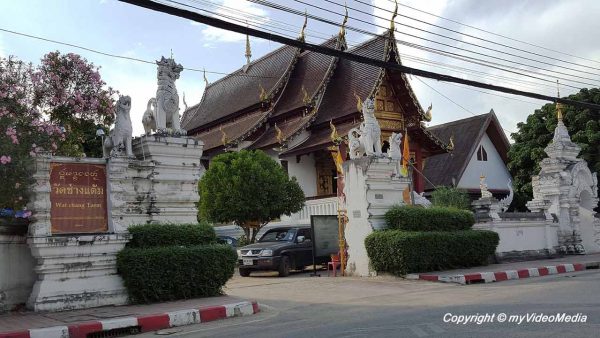
Wat Chang Taem is south of Wat Chedi Luang on an area of 800 square meters. The Wihan, an elevated assembly hall, is in the center of the site. A special feature is that it was built in the characteristic Lanna style.

We do further not stay, but go on in a northerly direction and reach our destination Wat Chedi Luang.
Wat Chedi Luang
Wat Chedi Luang is surrounded by a large wall. Behind the entrance gate, halls and Chedis are waiting for us.
History of Chedi Luang
Wat Chedi Luang is a third-class royal temple. This means that it was built by distant relatives of the king or of nobles. King Saen Mueang Ma began the construction in the 14th century, but it was not completed. He wanted to keep the ashes of his father here. After his death, his widow continued the construction, but only King Tilokaratcha completed it in the 15th century.
At that time, Chiang Mai was the center of La Nan, a kingdom that was independent of the Ayutthaya. It was a federation of dependent principalities. With a height of 82 m and a diameter of 54 m at the base, the Stupa was the tallest building in Lan Na.
You are currently viewing a placeholder content from YouTube. To access the actual content, click the button below. Please note that doing so will share data with third-party providers.
More InformationIn 1468, the Emerald Buddha was placed in a niche, where he remained for 83 years. During an earthquake in 1545, the upper 30 m collapsed. There were obviously static problems, which also explain the long construction period. After this event, the Emerald Buddha was brought to Luang Prabang in North Laos.
At the 600th anniversary of the Chedi in 1995, a copy of the Emerald Buddha made of black jade was placed on the former site.
Inside Wat Chedi Luang
Before we enter the Wihan (the Assembly Hall), we visit the Lak Muang (city pillar) to the left, a shrine which was brought here in 1800. A Lak Muang is usually a relic from earlier times, which is attributed to a powerful guardian function.
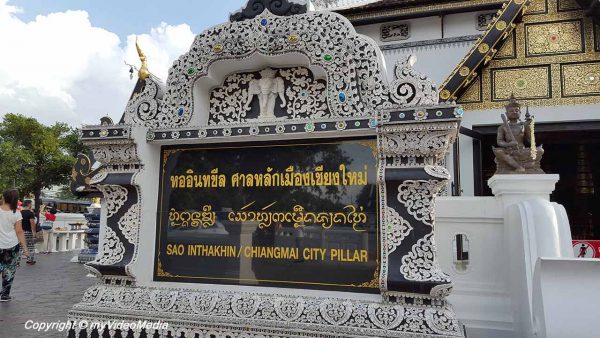
Here, it consists of a gold-decorated wooden base, with a standing Buddha on top. Four tapered gold-plated umbrellas frame the site. Ornate paintings on the walls illustrate stations from the life of Buddha. As a rule, the Lak Muang forms the center of the city from where the distances are measured.
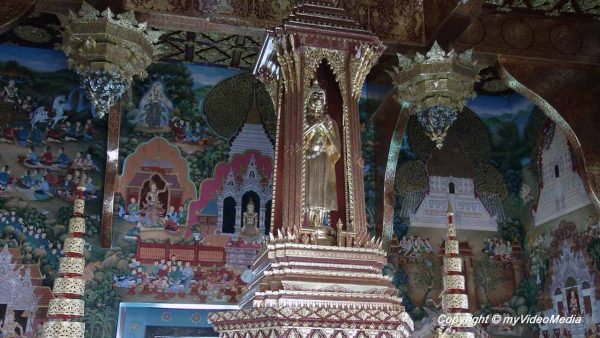
The main Wihan, the sanctuary, impresses by its dimensions of 19.7 x 50.8 m. At the front side of the impressive columned hall is the revered standing Buddha statue of Phra Chao Attarot, flanked by two of his disciples. The Buddha statue measures 8,23, the ones of his disciples respectively over 4 m.

To the north and south of the Wihan, there is a Chedi.

We turn to the western part of the temple district with the original stupa. After we go around it, we see the black jade Buddha. Originally, the stupa was all around decorated with elephants, today only a few are preserved.
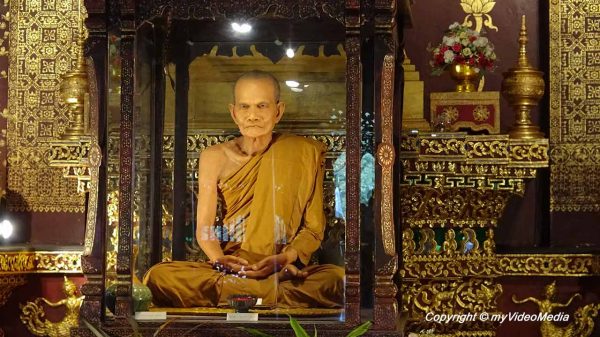
Two smaller Wihans in Lanna style stand out. In the first one, we see a lifelike looking wax statue of the former Abbot Phra Ajahn Mun Bhuridatta. A wax statue of its pupil Ajahn Maha Bua stands in a smaller Wihan next to it.
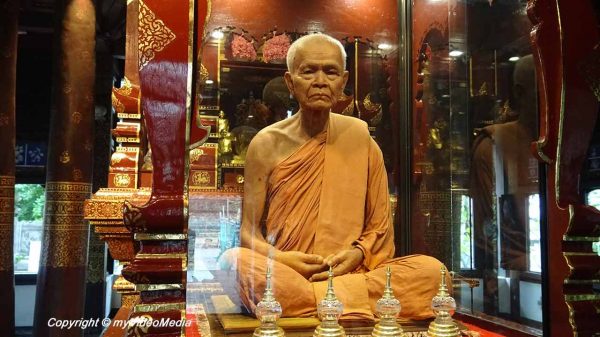
Finally, we pass another 8.7 m long gold-plated reclining Buddha.
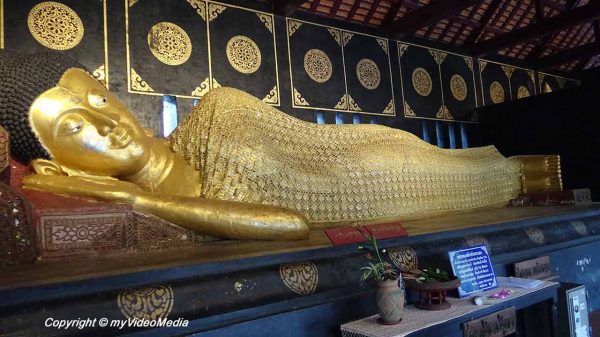
Even if some reconstructions are disputed because some do not match the original style, Wat Chedi Luang is one of the most visited Wats in Chiang Mai.
Next >>> Three Kings and Three Wats in Chiang Mai
Text, photos and video: Copyright © myVideoMedia